Liberty Seated Half Dollar
1839 to 1865 No Motto
1853 to 1855 Arrows
1866 to 1891 Motto
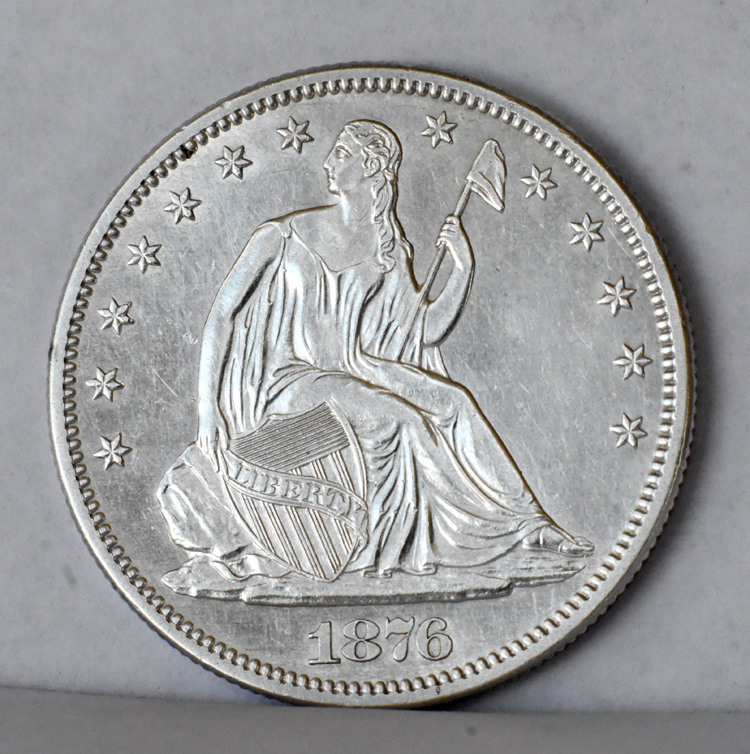 |
The Liberty Seated half dollar first appeared in 1839, designed by Christian Gobrecht and displays a shield eagle holding arrows and a branch, under which are the words HALF DOL. After a few minor variations, the 1853 coin was modified to contain 90% silver and was 30.6mm in diameter. Also, a pair of arrows was placed beside the date. The, in 1866 the motto IN GOD WE TRUST was written on a banner above the eagle's head on the reverse. This coin is one of the most varied in all of the history of U. S. coin mintage with 129 different variations. The 1870 CC issue is very rare and extremely valuable. Also, during 1861, the confederacy made 4 half dollars with this obverse but with a different reverse. Each is worth nearly 1 million dollars today. The 1861 confederate issue was an important part of a Perry Mason TV episode. |
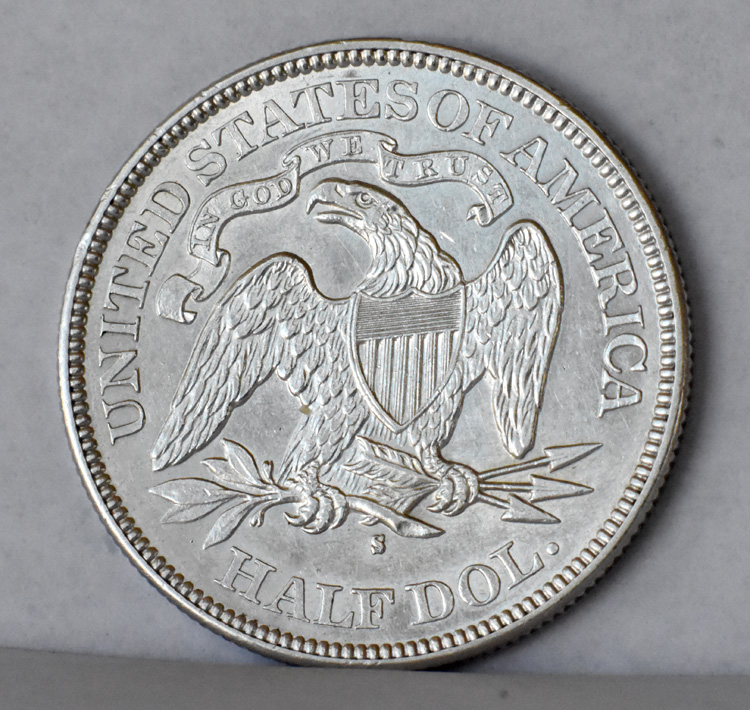 |
| This coin was sold as uncirculated but was not certified as such. It cost $335 and is worth a bit more if the grade is real but a bit less if it is only an AU 50.. It is stored in the D case. | This is the reverse of the coin at left. About 4 1/2 million of these were minted at the three different mints in use at that time. | |
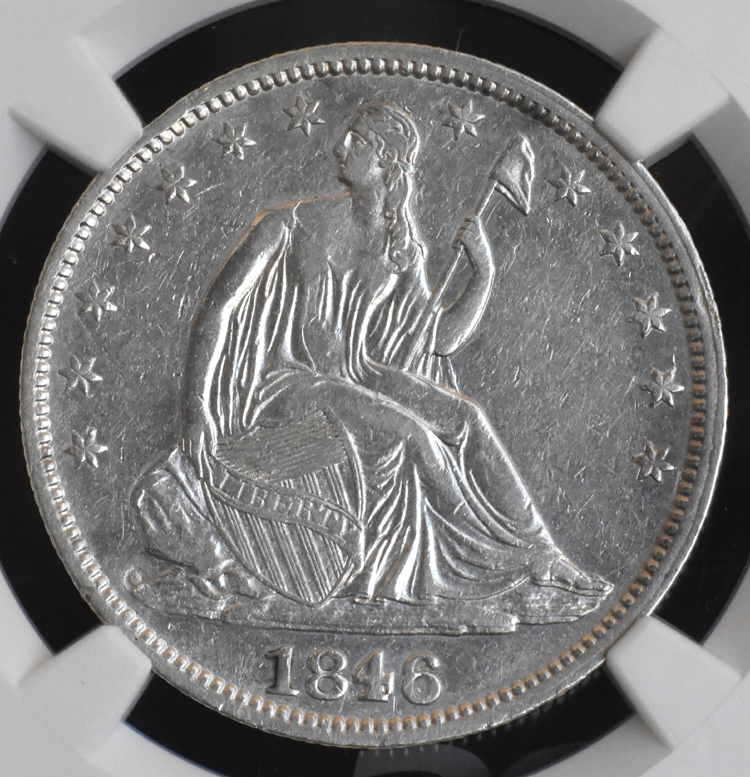 |
|
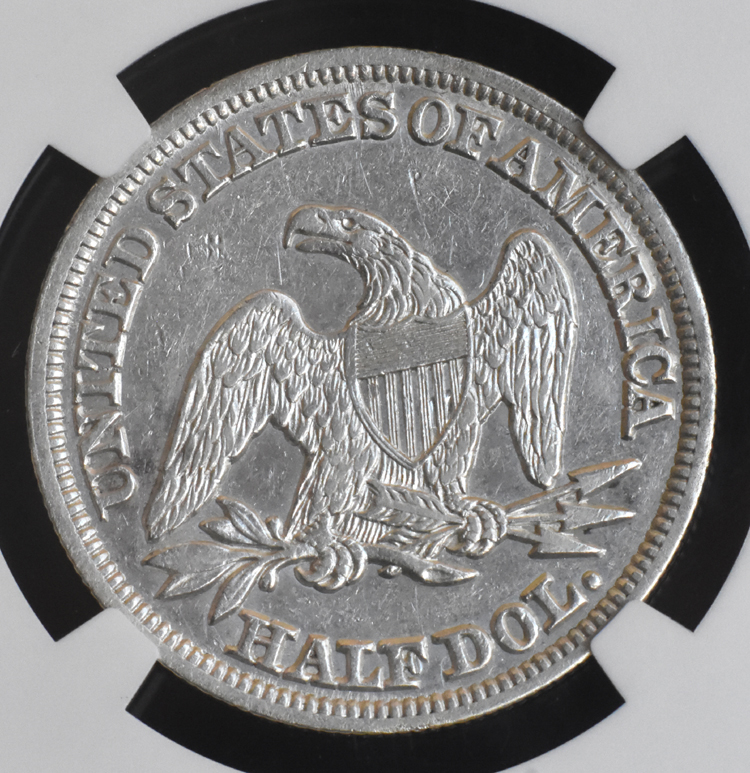 |
| I have three of these coins in the U.S. Types album, one of each type mentioned above, and while the two with arrows and the motto are worth about $42, and $42, the 1846 shown above cost me $224.70 and is worth at least $200. Three variations exist in the mintage of that year and the coin above is certified by ANACS as being AU 50 and is certified as having the 'medium date'. This is the reason that it is valued at $350. And because this example was altered by the removal of a spot (I believe just off the left edge of the platform upon which liberty is mounted) it is worth less than the retail value of $350 for the grade of AU 50. | This is the reverse of the coin at left and both other variations, but it does not show the arrows or the banner above the eagle. Only 2,210,000 of these coins were minted in 1846, including all three variations, a medium date (my example), a tall date, and a date overstrike of the 6 over a horizontal 6. It is not known how many of each variation survive today. I will never have all 129 different examples of this coin in my collection and do not have a specific album for them but I do have a Whitman album of miscellaneous coins with a number of seated liberty halves stored there. | |
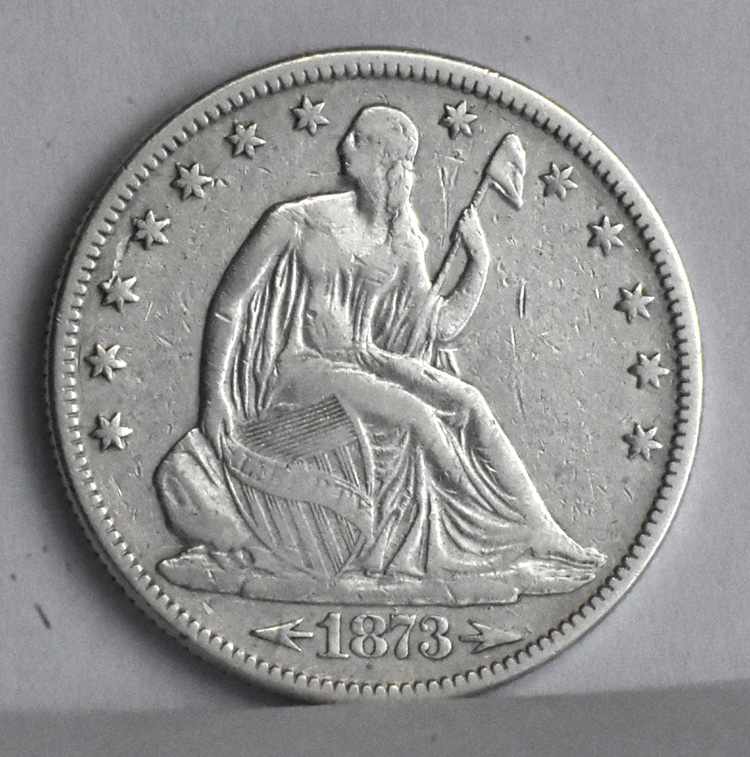 |
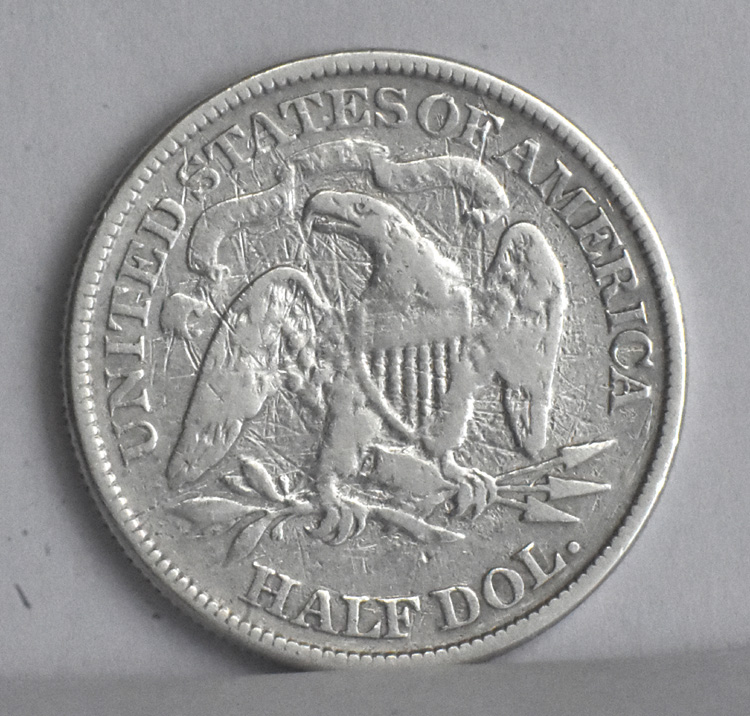 |
|
| This example above shows the arrows at the date and is stored in an album of miscellaneous coins along with seated liberty dollars. The coin was sold as an F 12 but I judge it to be a VG 8 because of the scratches on the reverse side of the coin. This coin is stored in the Miscellaneous album described above. It cost me $40 and may be worth that much. | This is the reverse of the coin at left; more than 5 million of these were minted that year. This side of the coin is badly scratched. | |
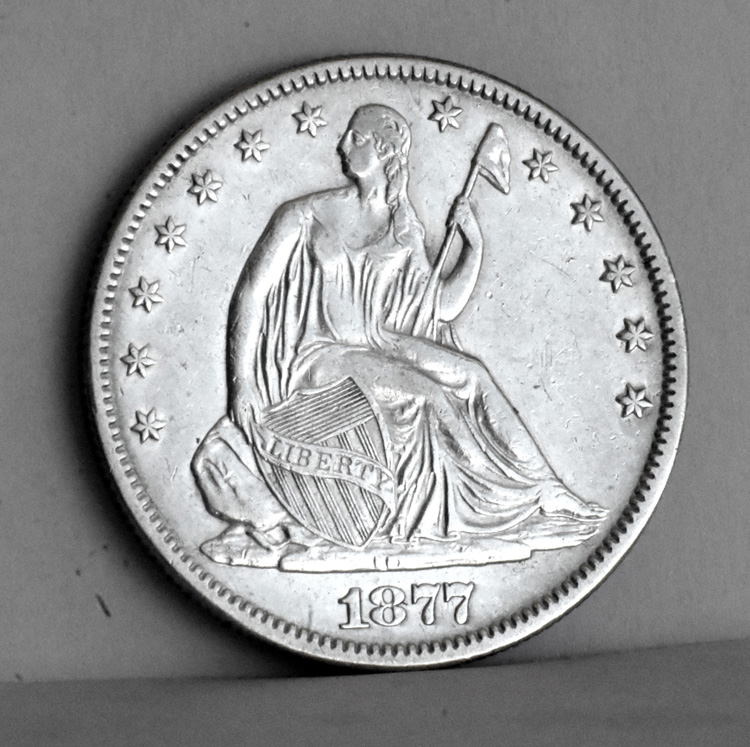 |
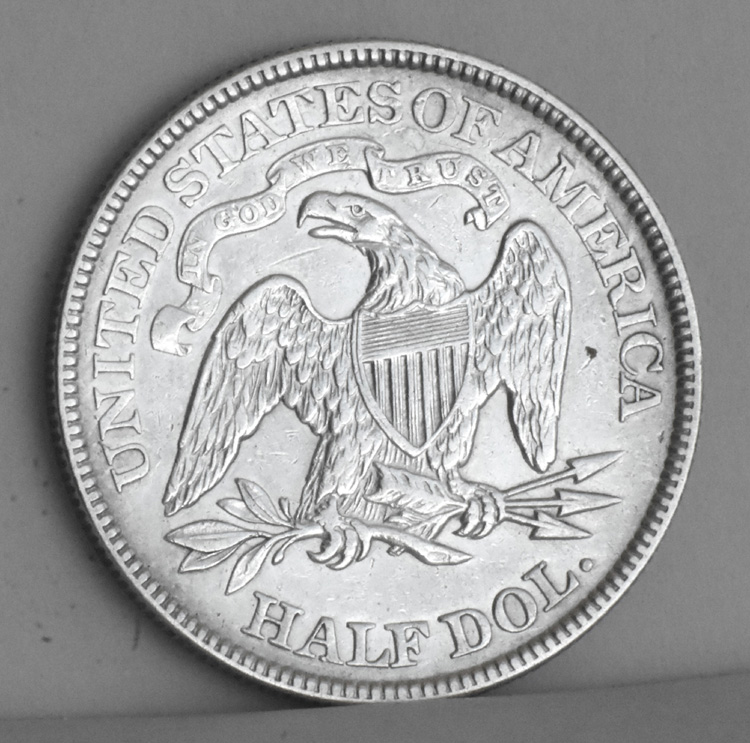 |
|
| This example above shows the banner above the eagle on the reverse. This coin was bought specifically to show the banner; it cost me $110 and seems to justify the grade of XF, claimed by the seller. It is stored in the Misc album of seated liberty halves and dollars. | This is the reverse of the coin at left, showing the banner above the eagle. |
| 1846: February 11: Many Mormons begin their migration west from Nauvoo, Illinois to the Great Salt Lake, led by Brigham Young. February 27: The Liberty Bell is cracked while being rung for George Washington's birthday. May 14: The United States declares war on Mexico. June 15: Bear Flag Revolt: American settlers in Sonoma, California start a rebellion against Mexico and proclaim the California Republic. June 16: The Oregon Treaty establishes the 49 th parallel as the border between the United States and Canada, from the Rocky Mountains to the Strait of Juan de Fuca. June 20: The first officially recorded baseball game using modern rules developed by Alexander Cartwright is played in Hoboken, New Jersey. November 31: The Donner Party becomes snowbound. December 29: Iowa is admitted as the 29th U.S. state. Exact date unknown: Elias Howe patents the sewing machine. |
| 1873: March 1: E. Remington and Sons of Ilion, New York, start production of the first practical typewriter. March 3: Censorship: The U.S. Congress enacts the Comstock Law, making it illegal to send any "obscene, lewd, or lascivious" books through the mail. April 1: The Coinage Act of 1873 comes into force, ending bimetallism in the U.S. and placing the nation firmly on the gold standard. April 13: Between 62 and 153 black freedmen are murdered by white southerners who had formed a militia in the Colfax massacre while attempting to protect the Grant Parish, Louisiana, courthouse, including about 50 who surrendered. Three white men also died in the confrontation, with at least one said to have been shot by his own ally. May: Henry Rose exhibits barbed wire at an Illinois county fair, which is taken up by Joseph Glidden and Jacob Haish, who invent a machine to mass-produce it. May 1: The first U.S. postal card is issued. May 20: Levi Strauss & Co. begins manufacturing the famous Levi's brand of jeans, using fabric from the Amoskeag Manufacturing Company in Manchester, New Hampshire. July 21: At Adair, Iowa, Jesse James and the James-Younger Gang pull off the first successful train robbery in the American West, netting $3,000 from the Rock Island Express. August 4: While protecting a railroad survey party in Montana, the Seventh Cavalry, under Lieutenant Colonel George Armstrong Custer, clashes for the first time with the Sioux, near the Tongue River (only 1 man on each side is killed). September 18: The New York stock market crash triggers the Panic of 1873, part of the Long Depression. October 30: P.T. Barnum's circus, The Greatest Show on Earth, debuts in New York City. December 15: Women of Fredonia, New York march against the retail liquor dealers in town, inaugurating the Women's Crusade of 1873–74. This leads to the creation of the Woman's Christian Temperance Union. Exact date unknown: Coors Brewing Company begins making beer in Golden, Colorado. |